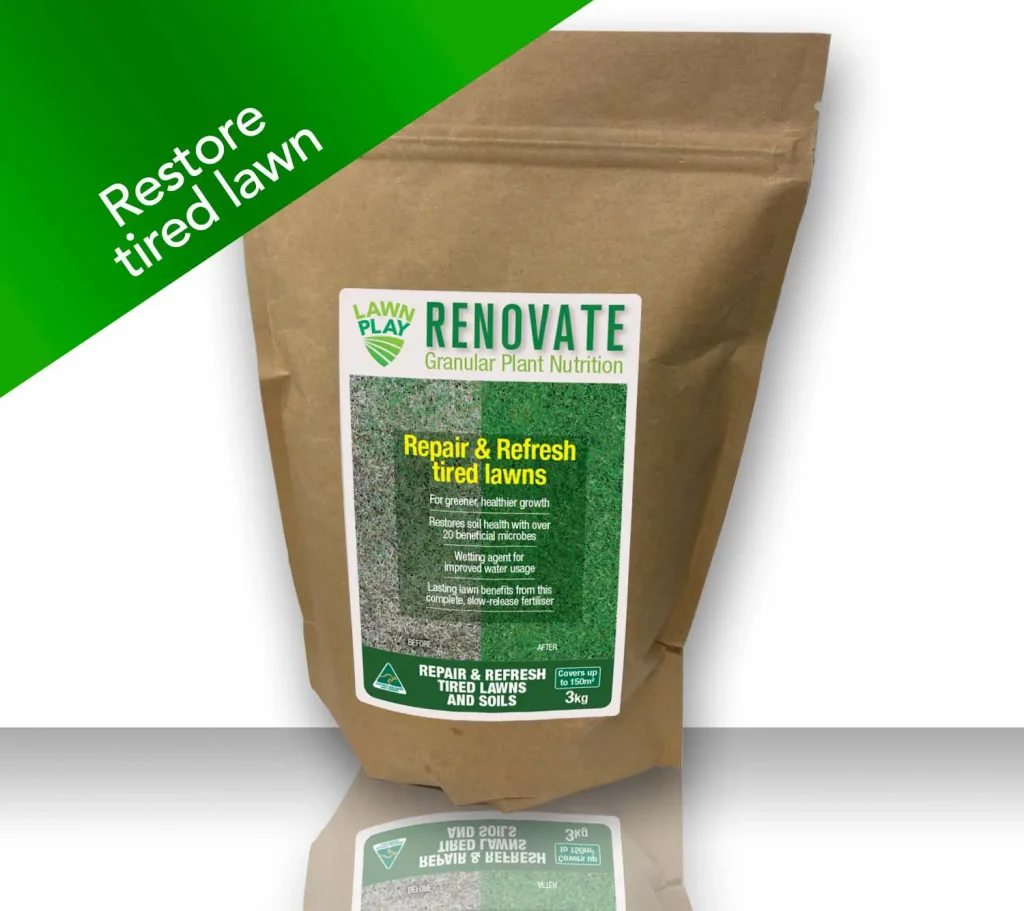
Couch lawns are one of the most popular types of grass used for turf in Australia. They are known for their fine blades, dense growth and ability to withstand high traffic. Couch lawns are low maintenance and drought tollerant, making them an ideal choice for homeowners and commercial properties.

3 Popular Varieties Of Couch Grass
TifTuf: One of the most popular varieties of couch lawn is TifTuf. This was developed by the University of Georgia’s Turfgrass Breeding Program. TifTuf is a drought-tolerant grass that is capable of maintaining its green colour even during periods of extended dryness. It has a fine-leaf texture and is resistant to diseases and pests, making it a great choice for high-traffic areas.
Tahoma 31: Tahoma 31 is another variety of couch lawn that was bred by the University of California’s Turfgrass Breeding Program. It is not only drought tolerant but also a cold-tolerant grass that can withstand temperatures as low as -20 degrees Celsius. Tahoma 31 has a coarser texture than other varieties of couch lawn but is highly resistant to wear and tear.
Wintergreen: Wintergreen Couch is a popular variety of couch lawn that was developed in Australia. It has a dark green colour and a fine leaf texture, making it a great choice for residential lawns. Wintergreen is known for its ability to recover quickly from damage and is highly resistant to disease and pests.

Three positives for couch lawns
There are several positives to consider when choosing couch lawns over other warm-season grasses available in Australia. Here are three:
- High traffic tolerance: Couch lawns are known for their dense growth and ability to withstand high traffic. This makes them an ideal choice for areas with heavy foot traffic or frequent use. This is especially important for commercial properties such as golf courses, sports fields, and parks.
- Low height of cut: Couch lawns are often used as putting and bowling greens. In a residential home lawn, it is not uncommon to see cylinder-cut couch lawns below 10mm in height. This is something that is much hardern to achieve in Kikuyu and very difficult in Buffalo lawns.
- Versatility: Couch lawns are highly adaptable to different environments and can thrive in a wide range of soil types and climates. They can also be used for a variety of purposes, from residential lawns to sports fields and golf courses. Additionally, there are several different varieties of couch lawns available that have been bred for specific characteristics such as drought tolerance, cold tolerance, or disease resistance, allowing property owners to choose the variety that best suits their needs.
three negatives for couch lawns
While couch lawns have many positives, there are also a few potential negatives to consider when choosing them over other warm-season grasses available in Australia. Here are three:
- Invasive growth: Couch grass has a high invasion risk. This means it can spread quickly and aggressively into other areas of the garden or landscape if not contained properly. This can make it difficult to manage and control. It can also impact the growth and health of other plants in the area.
- Winter Dormancy: Couch lawns go dormant in the winter months. This not only results in a lack of colour but can also can leave the lawn unable to recover from too much traffic or damage. Extra maintenance programs, like fertilisation programs, or over sowing with Rye grass are needed to have couch sustain colour and vibrancy over winter.
- Shade tolerance: Couch lawns need a minimum of about 5-6 hours of direct sunlight per day to thrive. This means that couch grass is not the best option in highly shaded areas.
How often should you mow a couch lawn?

The frequency of mowing a couch lawn will depend on several factors, such as the specific variety of couch grass, the climate, and the level of use the lawn receives. However, in general, couch lawns should be mowed about once a week, to once a fortnight during the growing season.
The goal with any mowing program is to remove no more than one-third of the leaf blade at a time. This helps to avoid stressing the grass and can promote healthy growth. (Should you accidentally mow lower than a third of your grass, this product helps the plant become more resilient to stress to promote healthy growth.) This means that the lower the lawn is cut the more frequently it will need to be cut. In most cases, a couch lawn cut below 10mm will need to be cut multiple times a week during the growing season.
Ultimately, the best mowing schedule for a couch lawn will depend on a variety of factors and may vary from property to property. However, as a general rule, property owners should plan to mow their couch lawn at least once a week during the growing season. But, you may do so more frequently as needed to maintain the desired height and appearance.
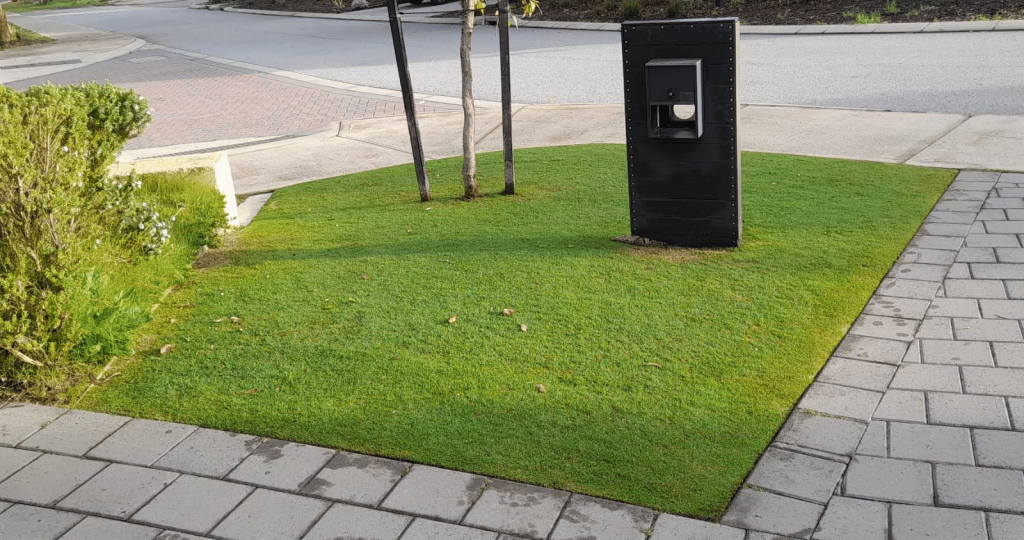
What height should you cut your couch lawn?
The ideal height to cut a couch lawn will depend on several factors, such as the specific variety of couch grass, the climate, and the level of use the lawn receives and the type of mower your have. However, as a general rule, Couch lawns maintained with a cylinder mower will do well around 10-20mm (and lower with extra maintenance practices). On the other hand, Couch lawns maintained with a rotary mower do well between 20-40mm.
Keeping a lawn at the correct height can help to promote healthy growth, prevent the grass from becoming too long and straggly, and reduce the risk of pests and diseases.
As mentioned above, it’s important when mowing a couch lawn to remove no more than one-third of the leaf blade during a normal maintenance cut. This helps to avoid stressing the grass and can promote healthy growth. Additionally, it’s a good idea to keep mower blades sharp to prevent tearing or damaging the grass blades. This can make the lawn more susceptible to disease and pests.
In addition lawns that receive more traffic or are in more shaded areas will do better in those areas when cut higher.
How much water do couch lawns need each week?

The amount of water that a couch lawn needs each week will depend on several factors, like the climate, and the level of use the lawn receives. However, as a general rule, couch lawns typically need around 20-25mm of water per week during the growing season.
During periods of high heat or drought, the lawn may require additional water to keep it healthy and hydrated. Conversely, during cooler periods or when there is adequate rainfall, the lawn will likely need no additional water.
It’s important to note that overwatering a couch lawn can be just as harmful as underwatering it. Overwatering can lead to waterlogging of the soil. This can suffocate the roots and promote the growth of harmful fungi and bacteria. It can also lead to excessive growth. This results in a build up of thatch in the lawn.
What is the best fertiliser for couch lawns?
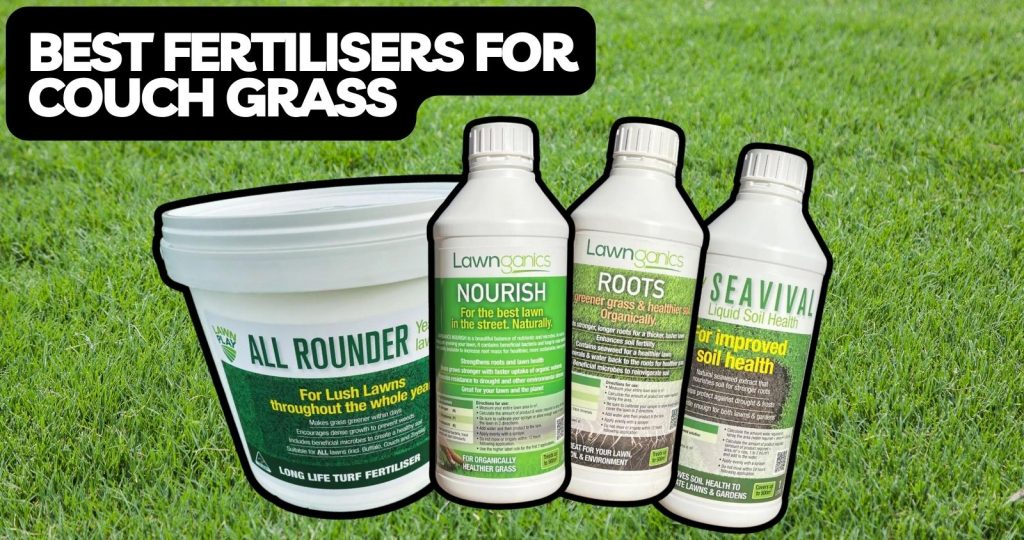
The best specific fertiliser for your couch lawn will depend on the time of year, the goal you have for your lawns and the starting state of your lawn. So there is no such thing as a one size fits all fertiliser. So, with that said here are the products that we use, and what situations we use them in.
Best fertiliser for rapid Couch Grass recovery: Lawn Play Renovate
Renovate has high rate of carbon coated nitrogen. This results in rapid growth.
It also has a full spectrum of trace elements with helps with the overall health of the plant.
If you have a patchy lawn, or your lawn has lost vigor and colour then this is a great option.
Click here to read more.
Increase Couch Grass Colour Without Increasing Growth: Lawnganics Brilliance
A common mistake I see is when a lawn is fairly healthy, is for people to put down a high nitrogen fertiliser at a high rate when they start to notice a drop in colour (as this is often what they used to get the lawn looking great in the past).
The problem is that the nitrogen then causes too much excessive growth. This leads to a thatchy lawn that is easy to scalp.
Brilliance is a liquid fertiliser that has a very low rate of nitrogen and a high rate of iron. This will cause a rapid greening of the lawn but only minimal extra growth.
Click here to read more.
Slow Release Fertiliser For Healthy Couch Lawns: Lawn Play All Rounder
Slow release fertilisers are the best fertilisers for most Aussie households. Whilst they are not as good at repairing a tired lawn, they are fantastic at maintaining healthy lawns (especially for busy lawn lovers).
All Rounder has two forms of slow release nitrogen so it can last around 2-3 months per application. It also includes a full spectrum of trace elements which is great for lawns overall health.
Click here to read more.
Encourage Root Growth in Couch Lawns: Lawnganics Roots
Encouraging deep root is very important to couch growth, especially in hot areas.
Roots is a combination of organic fertilisers and soil health stimulants like mycorrhizal fungi, humates and kelp that help promote root growth.
Click here to read more.
There are a whole host of fertilisers that a suitable to use on couch grass here. We use and recommend products from The Lawn Shed all the time.
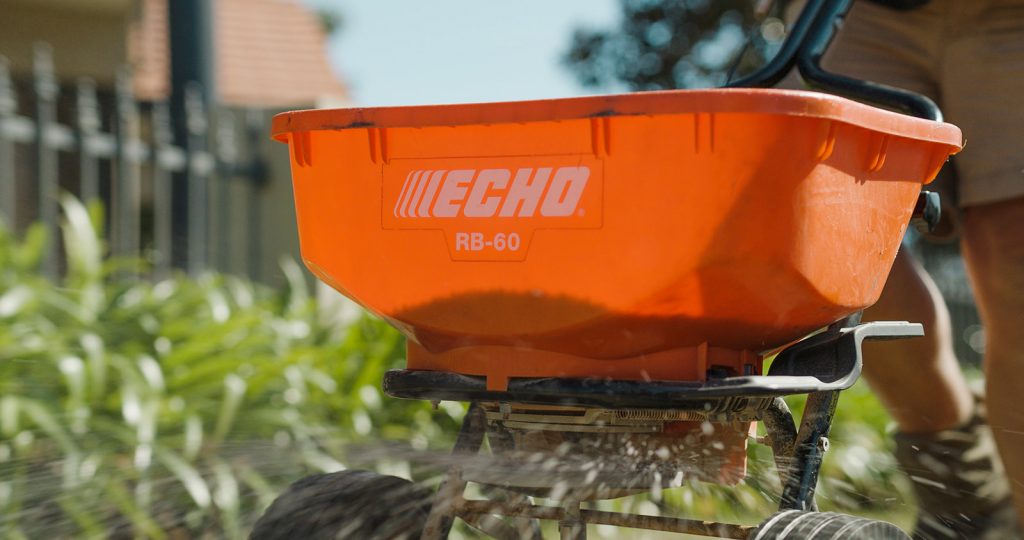
How often should couch lawn be fertilised?
The frequency of fertilising a couch lawn will depend on the time of year, the type of fertiliser you are using and your goals for the lawn.
A granule fertiliser like Renovate should be applied every 6-8 weeks. Where as All Rounder, which is also a granule fertiliser, would only need to be applied ever 8-12 weeks due to being made with a longer lasting form of nitrogen.
Liquid fertilisers like Roots and Brilliance will need to be applied every 2-4 weeks.
During periods of high growth, such as in the spring and summer, the lawn may require more frequent fertilization to maintain its health and appearance. Conversely, during cooler periods or when the lawn is not actively growing, fertilization may not be necessary or may require less frequent application.
It’s important to note that when fertilizing a couch lawn, it’s important to use the right type of fertilizer and to follow the manufacturer’s instructions carefully. Applying too much fertilizer or using the wrong type of fertiliser can lead to damage or burn the lawn. This can be difficult to recover from.
Can couch lawns be vertimowed?
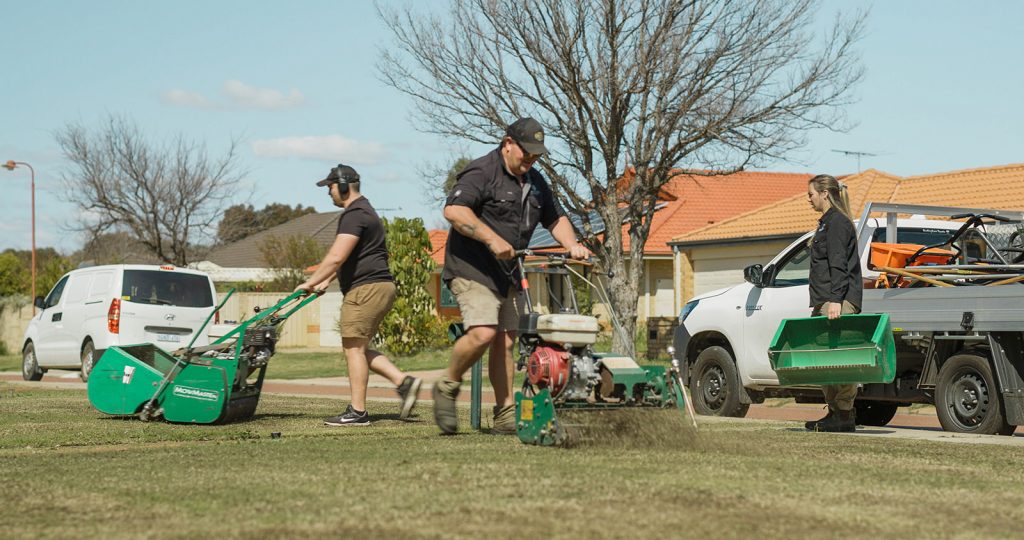
Yes, couch lawns can be vertimowed. Vertimowing, also known as vertical mowing or dethatching, is a process of removing the buildup of dead grass, leaves, and other organic matter that accumulates at the base of the lawn over time. This buildup, also known as thatch, can prevent water, nutrients, and air from reaching the roots of the grass. This can lead to a range of problems including scalping, disease, and a lack of resilience in hotter months.
Vertimowing is typically done using a specialised machine that cuts through the thatch layer and removes the buildup, leaving behind a healthier and more vibrant lawn.
The frequency of vertimowing a couch lawn will depend on what your goals are for the lawn, the lower you want to maintain the lawn the more vertimowing will be needed. As a general rule, vertimowing should be done about once every 1-3 years depending on your goals for the lawn and how it has been maintained.
It’s important to consult with a lawn care professional or horticulturist in your local area to determine the specific vertimowing needs of your couch lawn. They can provide guidance on the best vertimowing practices for your specific lawn and help you maintain a healthy and vibrant lawn.
Should you aerate your couch lawn?

Yes, it’s generally a good idea to aerate your couch lawn on a regular basis to help promote healthy growth and maintain a vibrant and lush lawn. Aeration involves creating small holes in the soil to allow air, water, and nutrients to penetrate deeper into the root zone of the grass.
Over time, the soil in a couch lawn can become compacted due to foot traffic, mowing, and other factors. Compacted soil can restrict the flow of air, water, and nutrients to the roots of the grass. This can lead to a range of problems including waterlogged soil, disease, and pests. Aeration can help to alleviate soil compaction and promote healthy growth.
The frequency of aeration for a couch lawn will depend on factors such as the specific variety of couch grass, the level of use the lawn receives, and the climate. As a general rule, most couch lawns will benefit from aeration at least once per year. They may also require more frequent aeration if the soil is particularly compacted or the lawn receives heavy use.
What diseases are common with couch lawns?
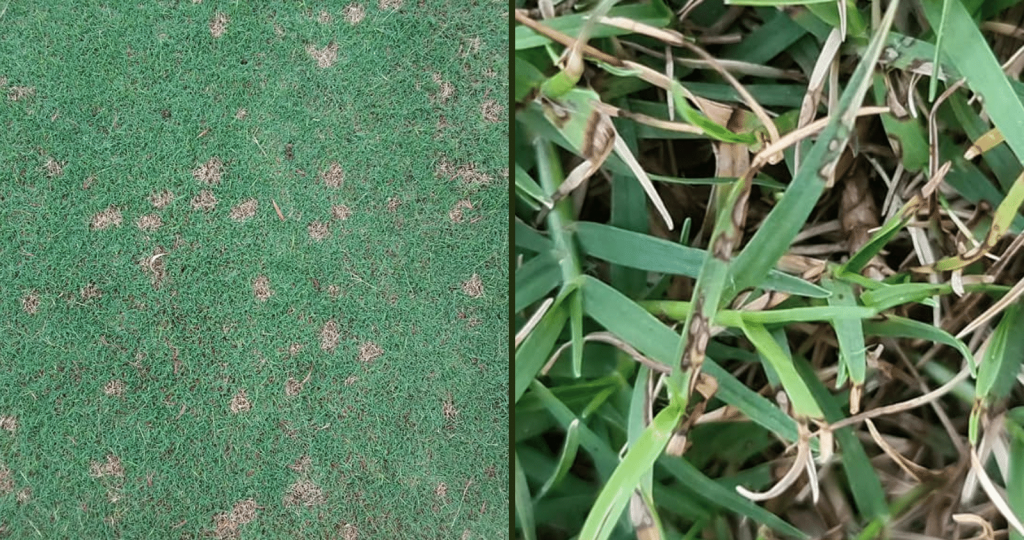
Couch grass is generally a hardy and resilient grass species that is resistant to many diseases. However, like all types of lawn grass, couch lawns can be susceptible to certain diseases under certain conditions. Here are some of the most common diseases that can affect couch lawns:
- Dollar Spot: This disease appears as small, silver-dollar-sized spots on the lawn. This is caused by a fungal infection. Dollar spot is most common in warm, humid weather. It can be treated with fungicides.
- Brown Patch: This fungal disease appears as large, irregularly shaped brown patches on the lawn and is most common in warm, moist conditions. Brown patch can be treated with fungicides, but prevention is key, including proper lawn care practices such as not overwatering and avoiding excessive fertilization.
- Pythium Blight: This disease appears as small, circular patches on the lawn and is caused by a fungus that thrives in warm, wet conditions. Pythium blight can be treated with fungicides, but proper lawn care practices such as improving soil drainage and avoiding overwatering are also important.
- Leaf spot disease: This is a common fungal disease that can affect couch lawns. It typically appears as small, circular or oval-shaped spots on the blades of grass, and may be yellow or brown in color. In severe cases, the spots may merge together, causing the entire blade of grass to turn yellow or brown and die off. Leaf spot disease thrives in warm, humid conditions and is often spread by over-watering or poor air circulation.
It’s important to note that proper lawn care practices such as regular mowing, watering, and fertilization can help prevent the onset of these diseases and promote a healthy and vibrant couch lawn. If you suspect that your couch lawn is suffering from a disease, it’s important to consult with a lawn care professional or horticulturist in your local area to determine the best course of treatment.
What pests are common with couch lawns?

Couch lawns can be susceptible to a variety of pests, including insects, rodents, and other animals. Here are some of the most common pests that can affect couch lawns:
- Armyworms: These caterpillars can quickly consume large amounts of grass, leaving behind brown patches. Armyworms are most common in warm weather. They can be treated with insecticides. You may consider neem oil if you have armyworms or caterpillars in your lawn.
- Sod Webworms: These larvae feed on the grass blades. They can quickly cause significant damage to a lawn. Sod webworms are most common in warm weather. Theycan be treated with insecticides.
- Cutworms: These caterpillars feed on the stems of grass blades and can quickly cause significant damage to a lawn. Cutworms are most active at night and can be treated with insecticides.
It’s important to note that the earlier an infestation is noticed and treated the better it is for the lawn. If you have any doubts about whether or not you have an insect infestation on your lawns do the soapy water test to identify the pest and then treat accordingly.
How to control weeds in Couch Lawns
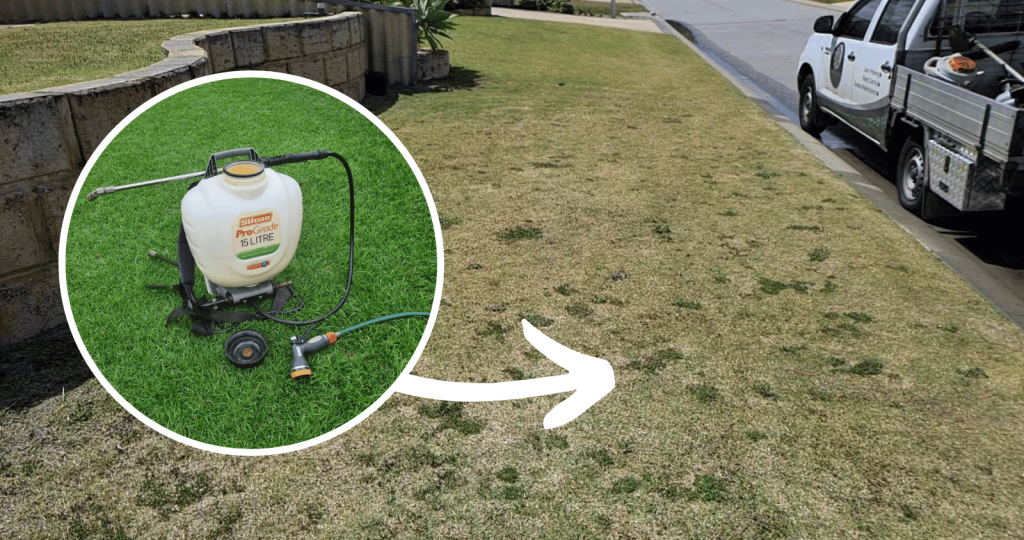
Controlling Broadleaf weeds in couch lawns
Broadleaf weeds can be unsightly and can compete with your couch lawn for nutrients and water. There are two main methods for controlling broadleaf weeds in couch lawns. One is manual removal and the other is selective herbicides like Bow and Arrow. Here are some pros and cons of each method:
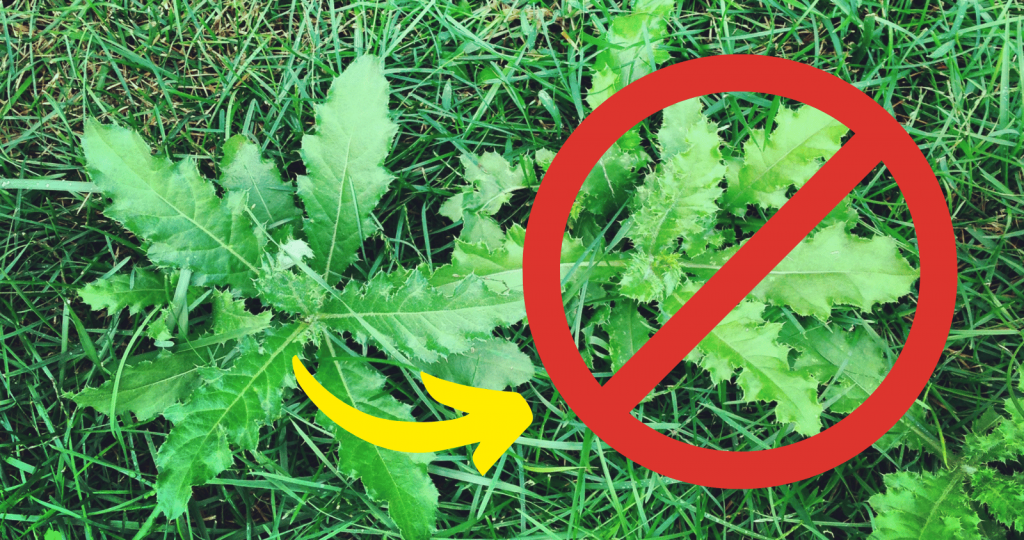
Manual Removal:
Manual removal involves physically pulling the weeds out of the ground by hand. This method can be effective for small areas or isolated weeds, but may not be practical for larger infestations. Manual removal is chemical-free method of weed control. Moreover, it has no risk of harming the lawn. However, it is very labour intensive and time consuming so is most likely not a realistic option for larger lawns.
Selective Herbicides:
Selective herbicides like Bow and Arrow are designed to target broadleaf weeds while leaving the grass unharmed. These herbicides can be effective for larger infestations or widespread weed problems. These selective herbicides are much more effective for large infestations of broadleaf weeds. The good thing is they are easy to apply with a sprayer. However, if not used correctly these herbicides can do damage to the lawn. Some people prefer not to use harsh chemicals if they can avoid it.
When using selective herbicides, it’s important to follow the manufacturer’s instructions carefully. Doing so can avoid harming the couch grass or the surrounding environment.
In summary, both manual removal and selective herbicides like Bow and Arrow can be effective methods for controlling broadleaf weeds in couch lawns. The best method will depend on the extent of the weed problem, the size of the affected area, and personal preferences for chemical-free or chemical-based weed control.
How to control wintergrass in couch lawns
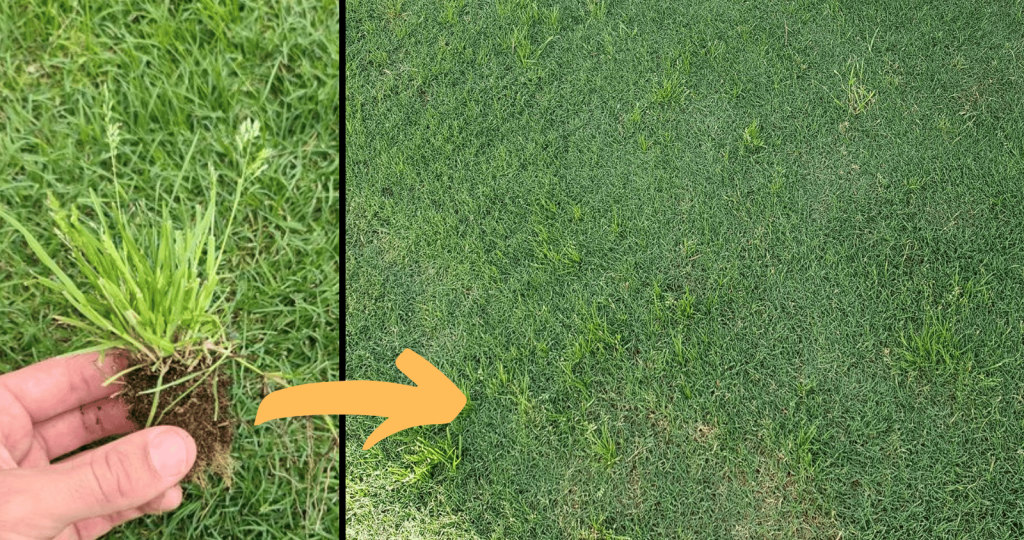
There are a few products on the market that can control wintergrass without damageing your Couch lawn. Products with Endothal are often the most common.
Endothal works by inhibiting the growth and development of the wintergrass, while leaving the couch grass unharmed. It is most effective when applied to young wintergrass plants, before they have had a chance to establish a strong root system.
When using endothal to control wintergrass in couch lawns, it’s important to follow the manufacturer’s instructions carefully. The herbicide should be applied in the cooler months, when the wintergrass is actively growing, and when the couch grass is dormant or has slowed its growth.
One potential drawback of using endothal to control wintergrass is that it can take several weeks for the herbicide to take effect, and the dead wintergrass may remain visible in the lawn for some time. Additionally, endothal can be harmful to aquatic organisms, so care should be taken to avoid applying the herbicide near water sources.
How to prevent weeds in your lawns
The best way to control weeds in your lawn is to prevent them before they even emerge. This can be achieved with pre-emergent hebicides like Spartan or Barricade.
When using Barricade or Spartan as pre-emergent herbicides in couch lawns, it’s important to follow the manufacturer’s instructions carefully. The herbicide should be applied evenly to the entire lawn using a sprayer or other applicator, and care should be taken to avoid overspray onto non-target plants or areas.
One of the benefits of using pre-emergent herbicides like Barricade or Spartan is that they can provide long-lasting weed control, often for up to several months. This means that fewer applications may be necessary throughout the growing season.
However, one potential drawback of using pre-emergent herbicides is that they can also prevent the growth of desirable plants, including newly-seeded grass or flowers. Therefore, it’s important to avoid applying these herbicides to areas where new growth is desired.
In summary, Barricade and Spartan can be effective tools for preventing weed growth in couch lawns. However, they should be used with caution and following the manufacturer’s instructions carefully. Additionally, it’s important to note that the best way to prevent weed growth in a couch lawn is through proper lawn care practices. Make sure to schedule regular mowing, watering, and fertilization. Also, early detection and manual removal of any weeds that do appear.
